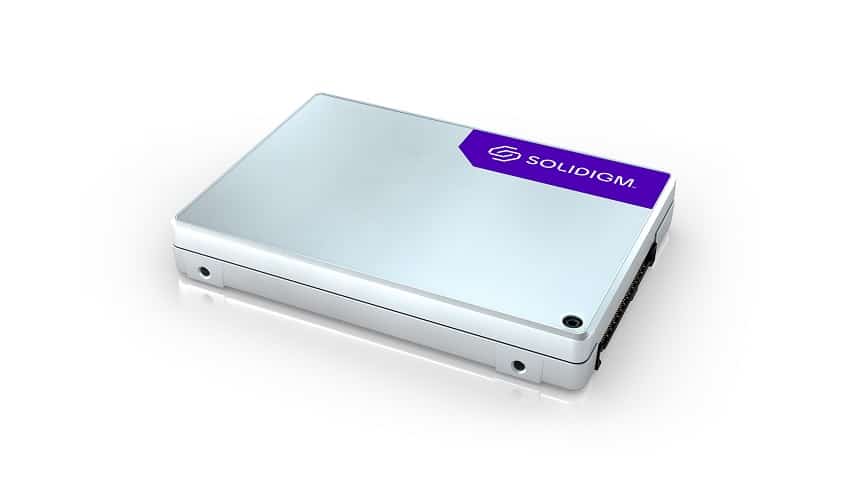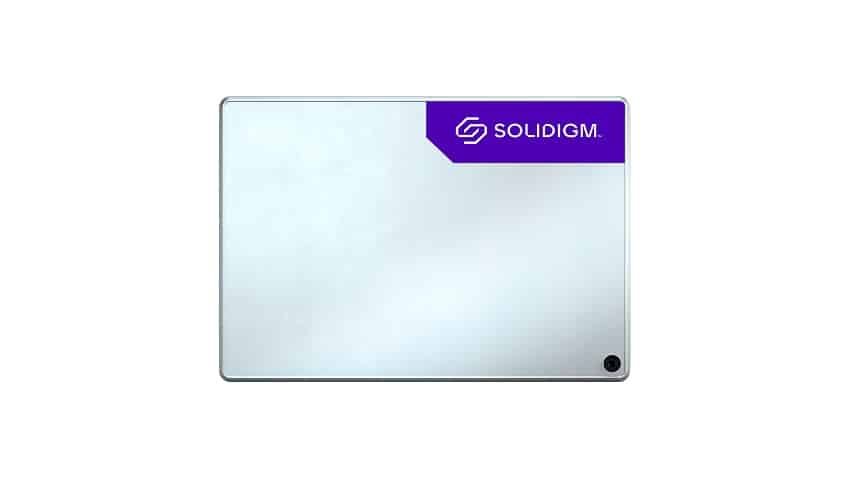Solidigm has unveiled the D7-P5810 at the recent Tech Storage Field Day, designed for high-endurance and extreme write-intensive workloads. Built on the company’s proven 144-layer Single-Level Cell (SLC) 3D NAND technology, the PCIe Gen4 drive thrives in handling write-heavy tasks such as caching, high-performance computing (HPC), and logging.
Solidigm has unveiled the D7-P5810 at the recent Tech Storage Field Day, designed for high-endurance and extreme write-intensive workloads. Built on the company’s proven 144-layer Single-Level Cell (SLC) 3D NAND technology, the PCIe Gen4 drive thrives in handling write-heavy tasks such as caching, high-performance computing (HPC), and logging.
 Solidigm indicates that its use of write-shaping software like Cloud Storage Acceleration Layer (CSAL) further extends the TCO, density, and sustainability value of Quad-Level Cell (QLC) to more diverse workloads. The D7-P5810 serves as an ideal storage accelerator in front of high-density capacity tiers, such as those based on QLC SSDs. Moreover, by using the SLC-based D7-P5810 for performance-sensitive data, such as metadata or logs, system performance can be significantly accelerated, says Solidigm.
Solidigm indicates that its use of write-shaping software like Cloud Storage Acceleration Layer (CSAL) further extends the TCO, density, and sustainability value of Quad-Level Cell (QLC) to more diverse workloads. The D7-P5810 serves as an ideal storage accelerator in front of high-density capacity tiers, such as those based on QLC SSDs. Moreover, by using the SLC-based D7-P5810 for performance-sensitive data, such as metadata or logs, system performance can be significantly accelerated, says Solidigm.
The drive has been released in two capacity options—800GB and 1.6TB—and promises an endurance of 50 DWPD over a five-year period. Technical specs indicate a maximum power consumption of around 12 watts and an idle power usage of less than 5 watts. The SSD also scores impressively in terms of reliability, with a Mean Time Between Failures (MTBF) rate of 2 million hours and an Unrecoverable Bit Error Rate (UBER) of less than one sector per 10^17 bits read.
The new Solidigm also has some solid performance specs, quoting 865,000 IOPS for 4K random reads at a queue depth of 256, and 495,000 IOPS for 4K random writes at the same queue depth. On the sequential read and write front, the drive is capable of 6,400MB/s and 4,000MB/s, respectively, at a queue depth of 128. Moreover, the drive promises ultra-low latency, with 4KB sequential reads at QD1 taking only 10ms and 4KB sequential writes (at QD1) at 13ms. For 4KB random reads and writes at QD1, the latency is 53ms and 15ms, respectively.
These performance numbers suggest that the D7-P5810 could offer noticeable speed benefits for operations that require fast data access and writing. This could be particularly beneficial for applications that are very write-centric, such as high-frequency trading, cloud computing, and metadata logging. Such performance levels could lead to quicker response times and higher throughput.
Solidigm D7-P5810 Specifications
| Media | 144L 3D NAND |
| BUS | PCIe Gen 4.0 |
| User Capacity | 800GB, 1.6TB1 |
| Endurance (5-yr) | 50 DWPD (4K Random) |
| Endurance (PBW) | 73 PBW (4K Random) |
| Max Power | ~12W |
| Idle Power | <5 W |
| UBER | < 1 Sector per 1017 Bits Read |
| MTBF | 2 Million Hours |
| Performance | |
| 4K Random Read, IOPS, QD256 | 865K |
| 4K Random Write, IOPS, QD256 | 495K |
| 128K Seq. Read, MB/s, QD128 | 6400 MB/s |
| 128K Seq. Write, MB/s, QD128 | 4000 MB/s |
| 4KB Sequential Read QD1 | 10µs |
| 4KB Sequential Write QD1 | 13µs |
| 4KB Random Read QD1 | 53µs |
| 4KB Random Write QD1 | 15µs |
While Solidigm’s claims suggest an impressive mix of performance, reliability, and cost-efficiency, it remains to be seen how the SSD will fare once we get our hands on one for in-depth testing in our lab (so stay tuned!). As organizations increasingly rely on data-intensive applications, the drive’s promising features certainly make it a potential candidate for meeting the rigorous demands of modern data centers.
Our friends at Tech Field Day have videos of the launch where Solidigm gets into more details for those interested.
Engage with StorageReview
Newsletter | YouTube | Podcast iTunes/Spotify | Instagram | Twitter | TikTok | RSS Feed

